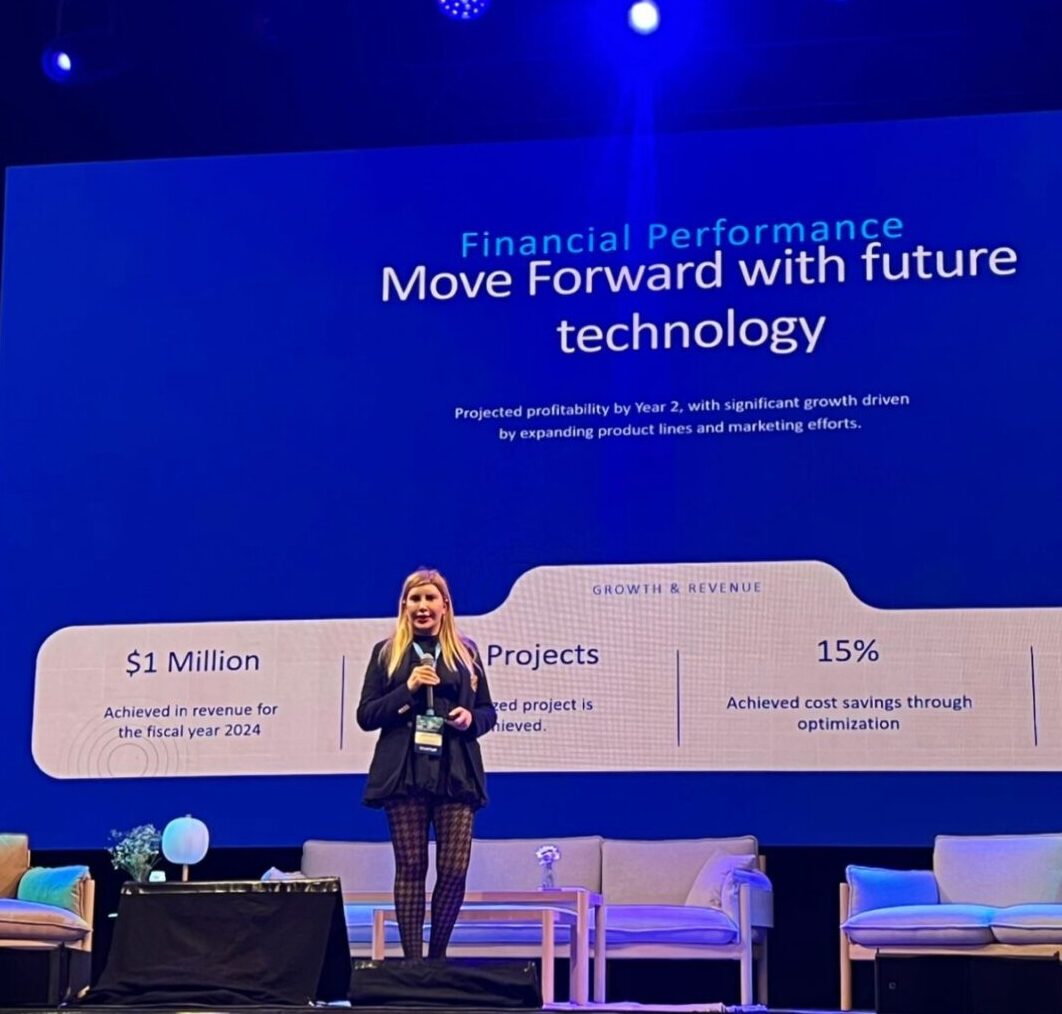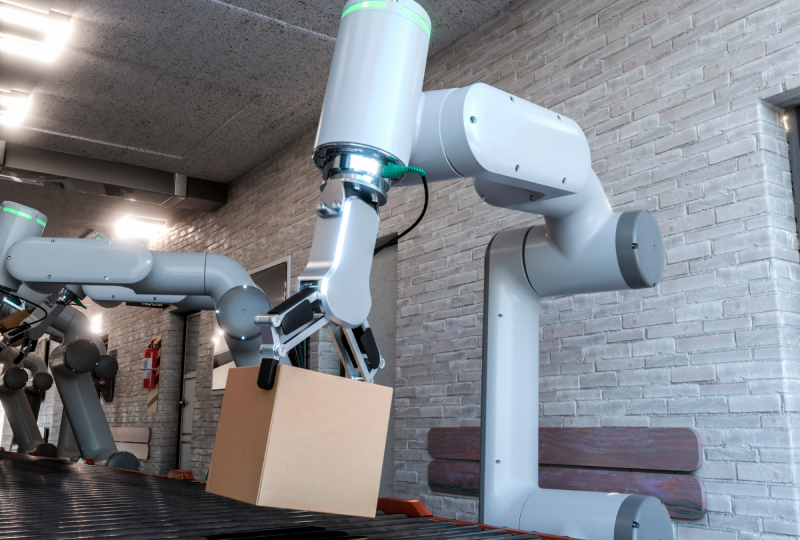What are Industrial Robots?
Industrial robots are automated robot systems designed to automate routine and repetitive tasks with machines. These programmable robots introduce low cost, high speed, high quality and high safety to production processes, performing tasks that can be dangerous for humans to perform on systems such as assembly lines, thus providing a safer working environment.
Machine automation and industrial robots have literally revolutionized today’s production facilities. With industrial robots, one of the biggest changes in terms of production after the industrial revolution has taken place, thanks to assembly lines and similar systems that have reached a speed that was previously unimaginable.
History of Industrial Robots
Only 250 years ago, all production processes were carried out by humans. Workers could fall victim to fatal diseases and accidents as a result of working in extremely dangerous, high temperature and cold environments. Moreover, this situation was considered extremely normal. In addition, despite the growing population, production was extremely cumbersome and slow. It was necessary to find a way to speed up production while keeping quality constant. This is exactly where the industrial revolution came to humanity’s aid.
Industry 1.0
From 1769 to the 1830s, the first industrial revolution (Industry 1.0) took place with the invention of steam engines. Human labor was replaced by machine power. The industrial revolution, which started in England, had an impact in Europe and America over time. And it irreversibly changed human life, social and social structure.
With the use of coal as fuel, developed countries, especially in Europe, coveted the resources of the Far East and Africa through activities such as colonialism in order to find new raw materials to support their industrial processes. Feeding their own industries with the riches of these regions, European countries reached their current wealth.
The effects of the industrial revolution on human life were also undeniable. Since workers no longer had to work in hazardous environments, death rates in the workplace decreased and birth rates increased, similar to the agricultural revolution.
Industry 2.0
With Industry 2.0, which can be said to have started in the second half of the 19th century, the concepts of mass production and assembly lines entered our lives as humanity. In 1903, automobiles were produced with the production line established by Henry Ford, and thus a new way of ensuring production much faster while maintaining the quality standard was discovered.
While the use of coal was widespread in Industry 1.0, electric energy and iron came to the fore with Industry 2.0. During this period, communication technologies such as the telephone and telegraph were developed and there was a huge increase in production efficiency. At the same time, various changes were observed in the social structure. With Industry 2.0, urbanization gained great momentum and the birth of the working class took place.
Industry 3.0
With Industry 3.0, which developed in the period from the 1970s to the early 2000s, the fuse was lit for an era in which information technologies were at the center of life. The use of digital technologies and computers became widespread. Automation systems were developed and robotic systems began to be used in industrial production with programmable logic controllers (PLC).
With the emergence of the Internet, accessing information became an effortless and faster process than ever before. Data collection and analysis processes were optimized and supply chains were established on a global scale.
Industry 4.0
The process of change in the industry from the 2010s to the present day is called Industry 4.0. During this period of industrial change, the concept of the Internet of Things (IoT) emerged. The Internet of Things can be summarized as the ability of machines to communicate with each other and provide data flow. At the same time, during this period, the focus was on the integration of cyber-physical systems and big data analytics and artificial intelligence applications were developed. As a result of these technologies, smart factories and autonomous systems were born.
Another new technology emerging in the Industry 4.0 era is 3D printers. 3D printers are printers that can instantly create the designed product. These systems will transform many sectors, especially architecture, and enable construction processes to be realized at a previously unimaginable speed.
New applications discovered in the Industry 4.0 era include virtual reality and augmented reality applications. Thanks to these technologies, much more realistic experiences can be experienced in many areas from simulations to games. With augmented reality, which has led to the birth of concepts such as the Metaverse, people have begun to make preparations for moving to a completely digital world.
Industry 4.0 has increased personalization and flexibility in production, and accelerated real-time data analysis and decision-making processes. At the same time, Industry 4.0 has led to radical changes in business models and ways of working, resulting in different ways of working such as remote working and hybrid working. These new ways of working, where employees now go to the office half of the week or work completely remotely, are expected to become more widespread in the future, and it is foreseen that the areas of the corporate business world limited to offices as we know it will be liberated.
What Do Industrial Robots Do?
Industrial robots are utilized in many areas in modern production processes. These areas include assembly operations, welding operations, material handling and logistics, painting and coating, cutting and processing, quality control, packaging, cleaning and training.
Industrial robots have caused a great increase in productivity with their 24/7 working capacity in all these different areas. At the same time, a high increase in the quality of the products produced has been observed as a result of the consistent and repeatable results of these robot systems, minimization of human errors and precise measurement capabilities.
In the long run, industrial robots also provide great gains in terms of cost, as they reduce labor costs. Energy efficiency is increased and material waste is minimized.
Usage Areas of Industrial Robots
The main areas of use of industrial robots are as follows:
- Automotive Industry
- Electronics Industry
- Food Industry
- Pharmaceutical Industry
- Aviation Industry
- Chemical Industry
- Logistics Sector
- Agriculture and Livestock Industry
- Construction Sector
- Defense Industry
Industrial robot systems provide great benefits and optimize all these areas.
Types of Industrial Robots
There are different types of industrial robots. These types include articulated robots, SCARA robots, Delta robots, Cartesian robots, cylindrical robots, polar robots, collaborative robots or cobots, mobile robots, palletizing robots, welding robots, painting robots and assembly robots.
Each of these robots provides flexibility and efficiency to modern production facilities, providing convenience in different areas.
What are Articulated Robots?
Articulated robots are one of the most common and versatile types of industrial robots. They usually have an arm structure consisting of 4 to 6 rotary joints, giving them a mobility similar to a human arm. Thanks to these joints, robots can perform complex movements within a large workspace and reach objects from various angles.
Articulated robots can perform a wide range of tasks such as welding, painting, assembly, packaging, material handling and quality control. Their high precision, repeatability and flexibility make them indispensable in many industries such as automotive, electronics, food and pharmaceuticals. Thanks to their programmable nature, they can be quickly reconfigured for different tasks, providing flexibility in production lines.
What are Scara Robots?
SCARA robots (Selective Compliance Assembly Robot Arm) are industrial robots specially designed for fast and precise pick-and-place operations. These robots, which can usually move in four axes, are characterized by two parallel rotary joints and one vertical linear axis. This structure gives the robots a wide range of motion in the X-Y plane and limited but precise mobility in the Z axis.
SCARA robots are widely used, especially in areas such as electronic assembly, small parts manipulation, laboratory automation and light material handling. These robots, which stand out with their high speed, precision and repeatability features, take up little space thanks to their compact structure and can be easily used in clean room environments. It is an ideal option especially for high-speed and precise operations that require low load capacity.
What are Delta Robots?
Delta robots are extremely fast and precise industrial robots with parallel connection structure. They are characterized by three or four arms attached to a base platform, usually mounted on the ceiling. These arms join at their lower ends to form an “end effector”. The unique design of delta robots allows them to operate at very high speeds (several movements per second) and at the same time ensures high precision.
Delta robots are ideal for high-speed packaging, sorting, picking and placing operations. They are widely used in the food, pharmaceutical, electronics and consumer products industries. Delta robots are optimized for light payloads and are often integrated with image processing systems, enabling fast and accurate product recognition and manipulation. Thanks to their compact structure and high efficiency, they provide significant space savings and productivity gains in production lines.
What are Cartesian Robots?
Cartesian robots are a type of industrial robot that moves along three right-angled linear axes (X, Y and Z). Their simple and robust construction allows these robots to provide high precision and repeatability. They are usually designed as a movable bridge or gantry system mounted on a frame.
Cartesian robots offer a wide range of workspaces and are used in tasks as diverse as 3D printing, CNC machining, pick-and-place operations, gluing, sealing applications and quality control. They are relatively easy to program and maintain, and their modular design allows them to be manufactured in different sizes and configurations. Their payload capacities can be in a wide range, making them usable in applications ranging from light electronics assembly to heavy material handling. The straight-line motion of Cartesian robots is ideal for tasks that require particularly precise positioning.
What are Cylindrical Robots?
Cylindrical robots are a type of industrial robot named after the cylindrical shape of the workspace. These robots have an arm that rotates around a vertical axis and a mechanism that can move up and down on this arm. In addition, the arm has the ability to extend and shorten. This structure allows the robot to move in a cylindrical coordinate system.
Although cylindrical robots have a limited workspace, they are highly efficient for certain tasks. They are especially used in machine loading and unloading, assembly operations, material handling and some welding applications. Thanks to their simple structure, they are easy to program and maintain. With high speed and repeatability, these robots are particularly suitable for radially symmetric operations. Their compact design allows them to take up little space in factory environments, making them ideal for working in confined spaces.
What are Palletizing Robots?
Palletizing robots are a type of industrial robot specifically designed to stack and organize products on pallets. These robots, which are usually large in size and have a high load capacity, are used at the end of production lines or in logistics centers. They are mostly articulated robots, but some models can also use Cartesian or SCARA designs.
Palletizing robots are capable of quickly and precisely placing boxes, sacks or other packages of different sizes and shapes onto pallets. They are often equipped with image processing systems and advanced software, which allows them to apply complex stacking patterns and automatically recognize different product types. These robots save labor, improve safety and significantly increase the efficiency of logistics operations. They are widely used in the food, beverage, chemical and manufacturing industries.
What are Paint Robots?
Painting robots are robotic systems specially designed for industrial painting processes. They usually have articulated robot arms that can move in 6 or more axes and have a paint gun or spray head at the end. These robots are used for painting large surfaces or complex shaped parts in automotive, aerospace, furniture and other manufacturing industries. With high precision and repeatability, paint robots ensure consistent coating thickness and quality.
Thanks to their programmable nature, they can apply different paint patterns and techniques and adapt to various part sizes and shapes. These robots reduce paint waste, lower labor costs and increase work safety by preventing exposure to hazardous paint vapors. They can also be equipped with advanced sensors and software, enabling automatic color change, paint flow control and quality inspection.What are
What are Collaborative Robots?
Collaborative robots, also known as “cobots” for short, are a specialized type of industrial robot designed to share the same workspace and interact directly with humans. Unlike traditional industrial robots, cobots can operate without safety cages and work side-by-side with human operators. They are designed with advanced sensors, force limiting technologies and soft, rounded surfaces to minimize the risk of harm to humans in the event of a collision.
Cobots are generally suitable for light to medium-weight tasks and are used for assembly, quality control, packaging and machine loading. They are easy to program, flexible to use and quick to deploy, making them an accessible automation solution for small and medium-sized businesses. They complement the skills of human workers, increasing productivity, improving ergonomics and protecting human health in repetitive or hazardous tasks.






